What does a DJ do?
What a DJs does when performing
If you’re asking what does a DJ do? Here’s a quick answer.
A DJ is an person who broadcasts pre-recorded music to listeners, commonly at social gatherings like parties or in venues such as bars and clubs. They use devices like DJ controllers, turntables, or CDJs to select, merge, and play music from vinyls, CDs, or digital files on a computer.
Maybe you think DJ-ing is easy or you’re keen to find out whether its something you could do. You’ve come to the right place! We cover all these questions and more in this article. So let’s get going!
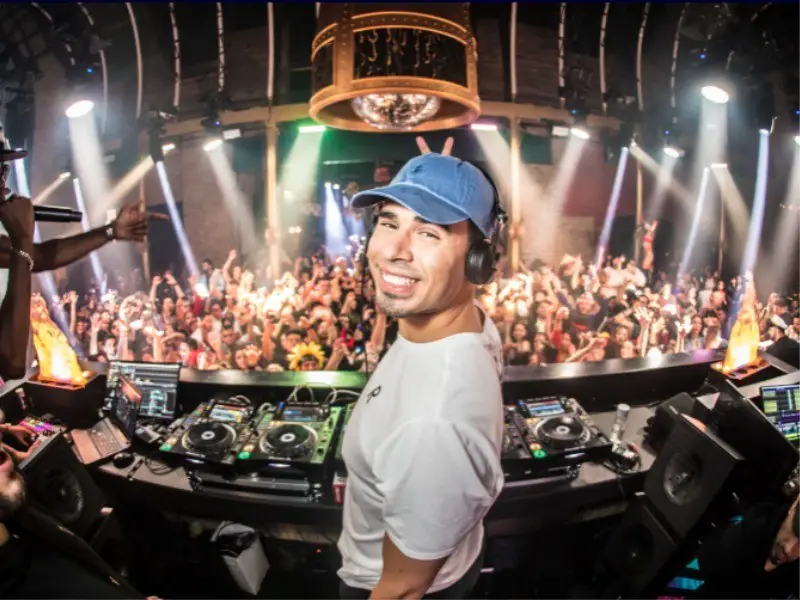
Firstly lets tackle what a DJ actually is and what it even means!
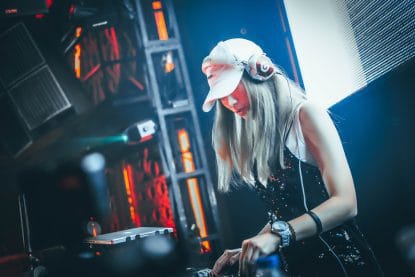
“DJ” stands for “Disk Jockey,” a term rooted in the days when DJs used vinyl records on turntables, skillfully syncing beats to entertain a crowd.
However, that doesn’t capture the full essence of a DJ. A DJ is an entertainer who plays music to an audience, whether in person at a nightclub, at an event, or broadcast over radio, cable, or, increasingly, the internet. They typically don’t sing or play musical instruments, instead providing a steady rhythm of music from recordings.
But a DJ’s role is much more nuanced. They must have a deep understanding of their music, be aware of their audience’s preferences, and know how to use the hardware and software integral to their performance. They also need the confidence to captivate their listeners.
To fully grasp what a DJ does on stage, we need to delve into the history of DJing and understand its evolution and current trends.
Let’s begin with a brief history lesson. What was the role of DJs in the past?
The art of DJing first materialized as a simple setup involving two vinyl record turntables wired to a studio mixer, allowing for simultaneous playback of both tracks. This innovation made it possible to blend two tracks together, transition seamlessly between them, and maintain a continuous rhythm, effectively eliminating “dead air” or awkward silences that could dampen the mood.
This was a game-changer. It birthed a new kind of nightclub, where DJs could exercise their creativity, designing music “sets” that complemented each other and kept the crowd entertained.
Vinyl reigned supreme in those days, and turntable manufacturers capitalized on the craze, producing record players with adjustable platter speeds. This feature made it possible to slow down or speed up songs to sync their beats.
The ability to “beat match” spawned several dance music genres, each sticking within a specific range of beats per minute (BPM) to facilitate mixing with other tracks within the same genre. Hence, house music typically ranges around 120-130 BPM, trance around 130-140 BPM, and drum & bass hovers around 170-180 BPM.
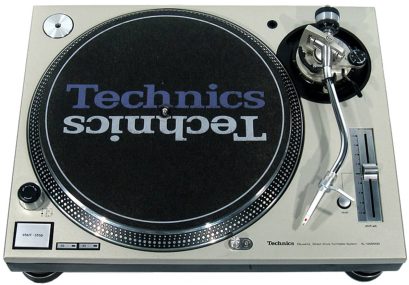
In the past, legendary DJ turntables like the Technics 1200 and 1210 were indispensable. They allowed for an 8% pitch shift on either side of the track’s original recording, set at either 33 or 45 RPM (rotations per minute of the turntable). Proficiency in beat matching was the ultimate skill for a nightclub DJ. In fact, we’ve even written an article on why learning to beat match is still important. For wedding and radio DJs, however, music is usually played at its original tempo.
Vinyl turntables, paired with soft, fluffy “slip mats”, made it easy to hold a record with just a light touch of the fingers, allowing for manipulation back and forth to create novel “scratch” sounds. This capability led to the birth of scratch mixing, a technique that is still vibrant and widely used today, even though it’s far from simple to master. More on that later!
Take a look at this exceptional instructional video from 1983, featuring the absolute legend, DJ Grandmaster Flash.
The art of DJ-ing created musical genres, new devices to control recordings and mix with too. Over the years its become ever more technical but no less creative.
So let’s explore just what a DJ does these days.
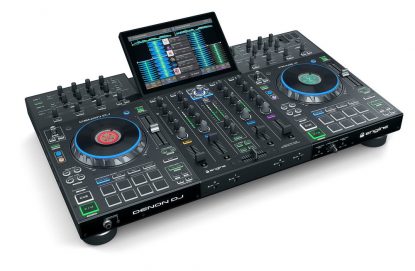
DJing has evolved dramatically since its inception in the 70s, transitioning from spinning vinyl records to manipulating digital formats in novel and exciting ways.
Numerous technical breakthroughs have fostered this creative evolution. Some argue that these advances have made DJing easier, depending on one’s personal choice of using modern DJ hardware. However, many skills are required to become a truly outstanding DJ. We’ll delve more into that in a subsequent chapter!
What a DJ does can vary depending on the type of DJ you’re considering. Let’s assume you’re here because you’ve heard of a famous DJ and you’re curious about what they actually do on stage, performing in front of hundreds or thousands of people. Perhaps you’re even wondering if you could become a world-renowned DJ.
Check out this interview with one of my idols, Carl Cox, where he vividly demonstrates just how technically demanding being a world-class DJ can be.
Over the years, the tasks that a DJ performs have evolved tremendously. However, there are a few constants that have persisted through all eras, so let’s explore those first.
Primarily, a DJ is someone who blends tracks together. This aspect of DJing has remained unchanged since the advent of pitch-shift turntables and genres of dance music that were designed to be mixed. The goal is to create a seamless, energetic vibe that carries through an entire set of music.
The methods DJs use to transition from one track to another may have evolved, but the objective to blend the music and build on the crowd’s energy has always been integral and always will be.
A DJ strives for uniqueness.
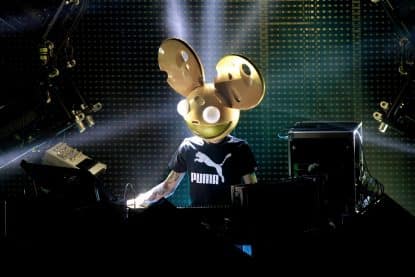 Its all about the USP baby! Especially if we’re singling out world famous DJs who have very specific characteristics. They may produce their own sounds and DJ with those.
Its all about the USP baby! Especially if we’re singling out world famous DJs who have very specific characteristics. They may produce their own sounds and DJ with those.
They may be known for their scratch mixing abilities, or for DJ-ing with a mask on like Marshmellow and DeadMau5. Whatever their personality its unique amongst other DJs and gets them recognition and more DJ gigs!
Some DJs are known from a particular style of mixing. That can be quick changes or key blending, maybe long sweeping seamless mixes or transitioning between unusual phrases of a song. There’s plenty of ways to be creative and carve a niche.
A DJ knows their crowd

The most successful DJs don’t just know how to blend songs together; they possess an acute understanding of what songs to play. Indeed, curating a set of songs might be the most creative and challenging aspect of DJing.
Seamlessly transitioning between songs is valuable, but if the crowd isn’t responding to your vibe, you’re going to struggle!
This principle holds true whether you’re a wedding DJ or an internationally renowned artist. Reading the crowd and playing what suits the time of day, the venue, and the crowd’s energy is truly what DJing is all about. Mastering this skill can take years, but it’s undoubtedly the most crucial aspect of any truly outstanding DJ’s repertoire.
So exactly how does a DJ do their thing in 2025? What makes DJ-ing possible in 2025?
While vinyl DJing remains an option, and some individuals continue to prefer it, it’s undeniable that the industry has largely migrated to digital platforms. This shift has ushered in a world of creative possibilities for DJs. Today, most DJs use some form of digital audio file.
While MP3s are possible, their quality is often deemed insufficient for most professional DJs. WAV files, though ideal for recording sets, are less useful for live DJing, making FLAC or M4A formats more common.
Playing digital files necessitates a computer, so certain DJ decks and mixers require a laptop to perform the heavy-duty audio processing. Alternatively, some DJ controllers incorporate built-in computers capable of playing audio files.
In either case, it’s the computer’s responsibility to playback the audio files, adjust their pitch, introduce effects, and facilitate blending. These capabilities equip DJs with all the necessary controls to foster creativity.
Giving you all the controls you need to be a creative DJ in 2025!
DJ Controllers
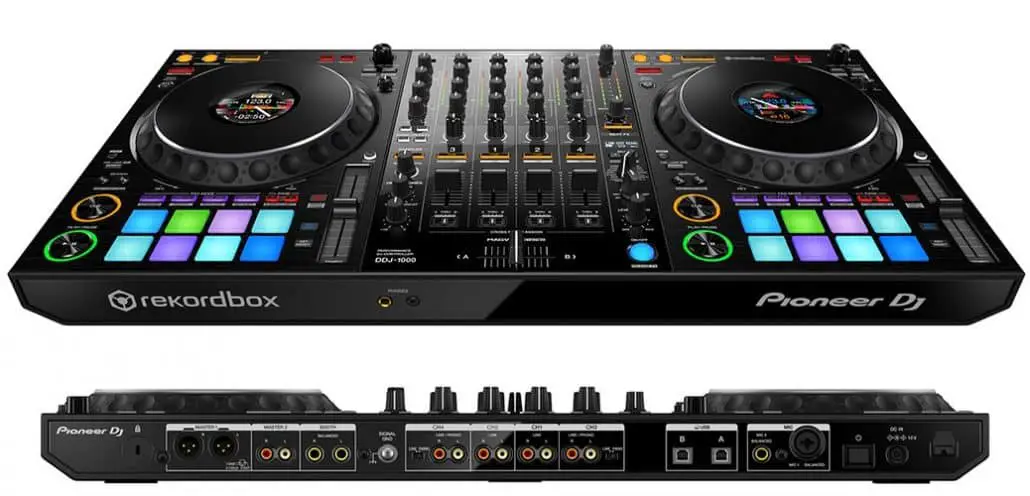
DJs frequently utilize controllers such as Pioneer’s DDJ-1000, which includes two physical decks enabling four virtual decks, as well as a plethora of controls for volume, effects, loops, and beat matching. Having such a range of controls readily available allows for immense creative potential.
This level of functionality is a far cry from my initial foray into DJing with a simple two-channel mixer and vinyl turntables.
With these diverse options at their disposal, DJs are expected to exercise increased creativity and originality in the present year.
Initially, the breadth of possibilities may appear daunting as DJing now involves a greater array of tasks. However, the allure lies in the potential to create astonishing sounds.
Effectively, you could produce an entirely new track live, in real-time, as you loop, apply effects, and blend samples together.
Single decks
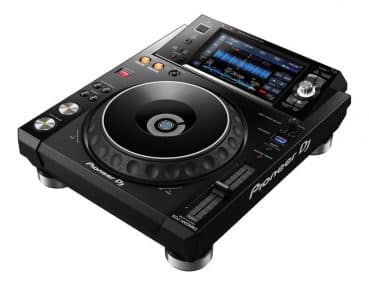
There are also standalone decks available, reminiscent of the vinyl turntables from the past. These allow you to browse your digital music collection and see the music’s waveform in greater detail as you loop, sample, and mix. The Pioneer XDJ series of decks provides a prime example of this.
Certain DJs vehemently advocate for this method, including the likes of Carl Cox, who employs four of these powerful units to create entirely unique sounds while DJing.
Therefore, it’s fair to argue that contemporary DJing is a highly technical undertaking. With an array of controls to master, software to learn, and hardware to invest in, it’s no wonder that modern DJing can be just as, if not more, challenging than in earlier, more analog eras.
So we’ve touched on modern DJ-ing in the chapter before this but lets go a little deeper in to all of the hardware DJs use to do what they do.
Decks
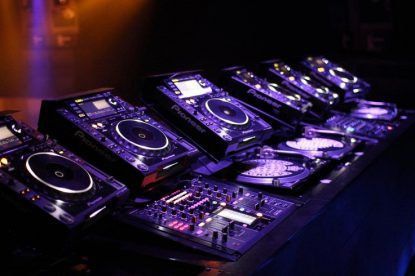
Whether you’re working with vinyl, CDs, or digital formats, you’ll need turntables, even if they’re not the spinning variety! Still referred to as “decks,” each deck controls one specific track, providing audio to other hardware for mixing. This process involves far more than simply pressing play. Let’s delve into some of the most critical features of any DJ deck.
Pitch Shift
Firstly, let’s examine the control that makes beat-matching two tracks possible: the Pitch Blend, or Pitch Shift (sometimes known as Tempo Shift). This control is typically a fader-style feature that, by default, is set to the middle position. It facilitates the slowing down or speeding up of a song, with the original tempo set at zero in the middle, and a plus or minus percentage amount to either quicken or slow the track.
Historically, vinyl turntables like the Technics 1210s permitted an 8% pitch shift, and the original Vestax DJ decks offered 10%, but modern turntables are software-driven, so the percentage amount can be personalized.
Nowadays, modern decks also have the option to synchronize the beats of multiple tracks, eliminating the need for manual pitch shifting with this control. However, beat-matching remains an indispensable skill that any DJ worth their salt should master.
Christian Jackson provides an excellent video tutorial on how to use tempo controls.
Adjusting this control in very refined increments is the key to finding the exact BPM of two tracks and mixing them together perfectly.
Cue points and hot cues
 Different manufacturers call them different things but they are all the same thing, exact markers or flags within any given song that you can instantly jump back to whenever you want.
Different manufacturers call them different things but they are all the same thing, exact markers or flags within any given song that you can instantly jump back to whenever you want.
These could also include loops where the deck repeats one section over and over to create a never ending track you can then creatively play with adding effects and adjusting controls to make a new sound.
Whether its a wedding DJ a club DJ or a DJ on a world tour, they all use cue points to quickly jump to important parts of tracks and to get creative with their sounds.
Library browser displays
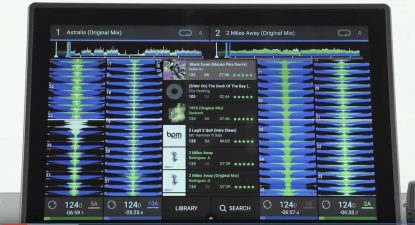 Some DJ decks also give you a display to view your music library on, scrolling through to select the next track or sample you want to play. While this used to be exclusively done on a laptop, these days its possible to ditch the laptop altogether and just use a DJ deck to find what you need.
Some DJ decks also give you a display to view your music library on, scrolling through to select the next track or sample you want to play. While this used to be exclusively done on a laptop, these days its possible to ditch the laptop altogether and just use a DJ deck to find what you need.
It can get fiddly especially without a physical keyboard but its definitely becoming a popular option on modern DJ equipment.
Mixers
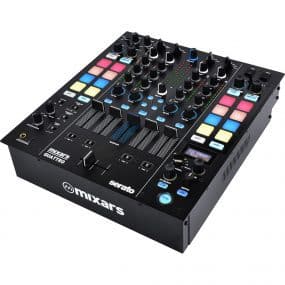 While decks provide the sound of each playing track, there’s still a need for another device to mix these sounds together. DJ mixers are the heart of the DJ gear setup where everything else plugs in and ultimately provides the main audio output for the sound system.
While decks provide the sound of each playing track, there’s still a need for another device to mix these sounds together. DJ mixers are the heart of the DJ gear setup where everything else plugs in and ultimately provides the main audio output for the sound system.
They can be overwhelming pieces of DJ kit because they have duplicated controls for each mixable channel. Providing volume control for each channel as well as the ability to control high, mid and low frequency volumes separately.
This allows DJs to cut the bass from one track and keep the bass from another, blending sounds without two bass-lines overpowering each other.
They also often include controls for added effects like reverb, filters, delay echos and gaters, allowing you to affect the sound of a particular channel in new and creative ways. Some mixers even let you layer one effect on top of the other for super interesting soundscapes.
This is another way modern DJ-ing has change immensely with powerful laptops and built in computers than can process all these effects on-the-fly.
Some mixers can be super simple and cheap too, others can be absolute beasts with what looks like hundreds of controls. Either way its. DJs job to understand how they work and just what they can do with it. This is what DJs must do well in order to be a great DJ.
Music libraries
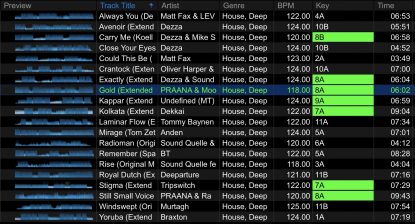 It goes without saying that none of this would be possible without a library of songs to play. This used to be a heavy record-box that vinyl DJs would carry from gig to gig, taking with them just the selection of tracks they needed for their set.
It goes without saying that none of this would be possible without a library of songs to play. This used to be a heavy record-box that vinyl DJs would carry from gig to gig, taking with them just the selection of tracks they needed for their set.
These days it can be USB sticks, external hard drives, laptops with gigabytes of tunes to play or for the likes of wedding party DJs it can be 100,000+ tracks that they’ll need quick access to when they’re reading the crowd’s energy and deciding what to play
Whatever method their library comes in, a DJ must know their library well. Its just another talent a DJ needs in order to be a great DJ. It doesn’t matter if you have 100 songs or 100,000. Great DJs know just what tracks they’ve got and how to curate the perfect playlist.
Like DJ hardware there’s plenty of DJ software to choose from that offer different ways to be creative. Some are locked to certain DJ hardware manufactures while others are more “open source” and work with all kinds of DJ gear. DJs in 2025 need to know how to use this software and all of its technical features.
This is a typical 4 deck setup with the popular DJ software Serato.
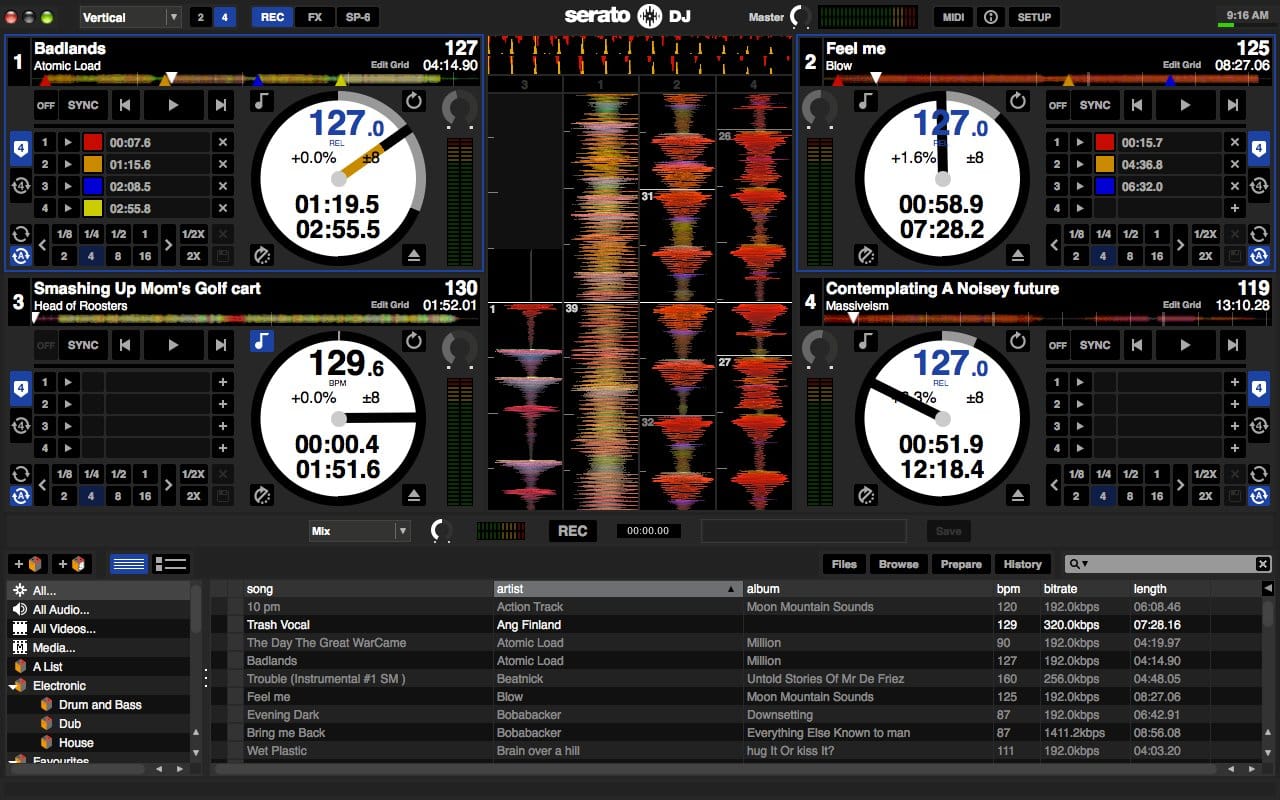
As you can see there can be a lot going on at once!
Here’s another popular DJ software app called Traktor that works mostly for the Native Instruments DJ hardware available like the Traktor S4 Mk3 and the Traktor Z1.
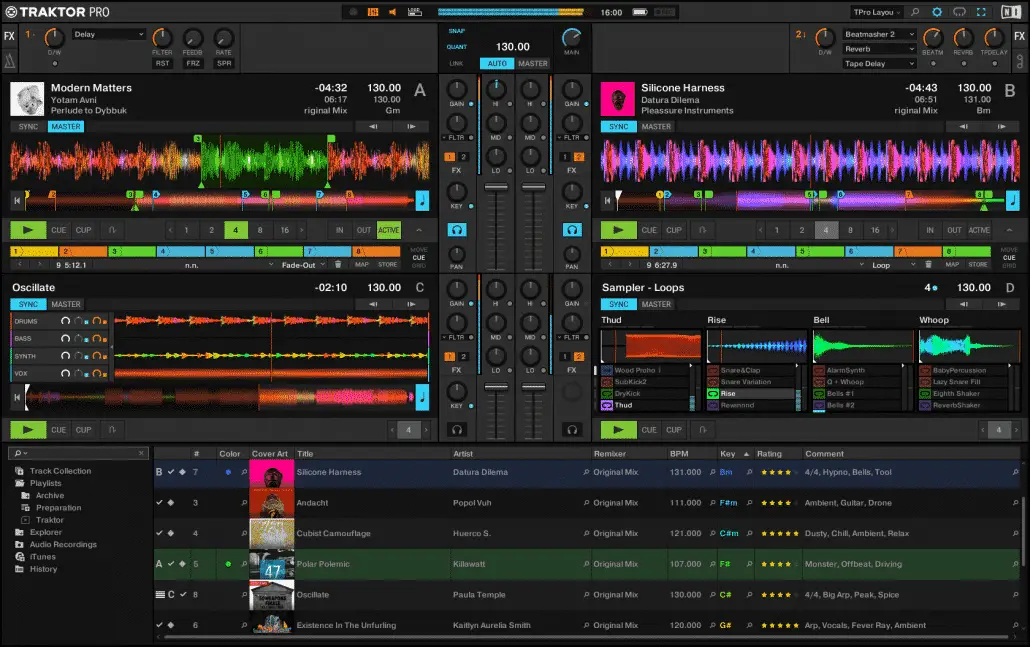
So a great DJ needs to master all the buttons, graphical displays, options, features and libraries available with whatever DJ software they decide to use. Much of what you see in the software is replicated in the DJ hardware, like the fader controls for volume, frequency volume controls and effects too.

The pretty rainbow coloured sections are the audio displayed in whats called “waveform” where you can seethe volume levels increase and decrease with each kick drum, high hat, vocal and melody. The various colours usually signify what frequency the sounds are in. So red or pink is low frequency sounds like kick drums, while high frequencies are generally blue or a lighter colour for things like high hats and percussion, with oranges and greens for vocals and melodies.
Some DJ software can handle loops and samples which can be triggered as one-off playback or looped indefinitely. This has become a big part of modern day DJ-ing. You no longer need to just overlap the end of each track with the beginning of the next, now you can keep a track playing forever in a loop while you mix in multiple decks to create whole new tracks.
What DJ apps are there to choose from?
Here’s the most popular apps professional DJs use.
- Rekordbox – Mostly used by DJs who have Pioneer DJ hardware
- Traktor – Mostly used by DJs who have Native Instruments DJ gear
- Serato – Popular with scratch mixers and super creative DJs
- djay – Popular with new DJs as its quick to learn and has powerful assistive features.
- Virtual DJ – Popular with mobile DJs and mobile discos
While there are other apps DJs use these guys definitely cover most of the market share and their integration with DJ hardware is whats most important here.
So now we’ve covered what hardware and software DJs use lets talk about the different types of DJs there are. Since they all have a different take on the act of DJ-ing and whats required.
Club and festival DJs
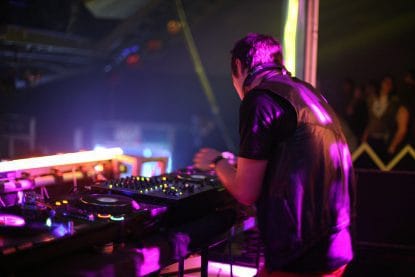 A club DJ is someone who works in the nightclub scene and is likely to play curated sets of a specific length. Depending on the nightclub this may be exclusively dance music, either house, techno, drum and bass or a variant of one of these.
A club DJ is someone who works in the nightclub scene and is likely to play curated sets of a specific length. Depending on the nightclub this may be exclusively dance music, either house, techno, drum and bass or a variant of one of these.
Their demands and requirements are different to other DJs as they usually can play what they become well known for rather than pandering to a crowd. The crowd is there to hear what they play rather than demanding certain tracks. So this offers the chance to be creative and really master some awesome mixing transitions and live music production too.
Scratch DJ
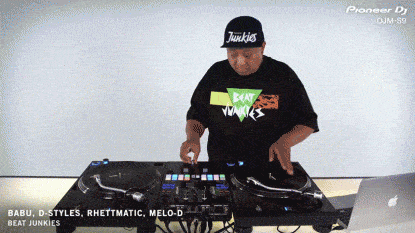 While these DJs play in clubs and festivals too they often create very different types of sets, showing off their amazing technical abilities by scratch mixing tracks together. Quite often they still use vinyl turntables but with records that feature a high pitched tone that DJ software can interpret as data, telling the app which direction the record is being played and at what speed. Effectively mimicking the old analog scratch mixing of records.
While these DJs play in clubs and festivals too they often create very different types of sets, showing off their amazing technical abilities by scratch mixing tracks together. Quite often they still use vinyl turntables but with records that feature a high pitched tone that DJ software can interpret as data, telling the app which direction the record is being played and at what speed. Effectively mimicking the old analog scratch mixing of records.
The biggest difference is the DJ hardware needed, coupled with the more frantic nature of scratch mixing that suits specialist nightclubs and festivals.
Private event DJs (Weddings, birthdays, etc)
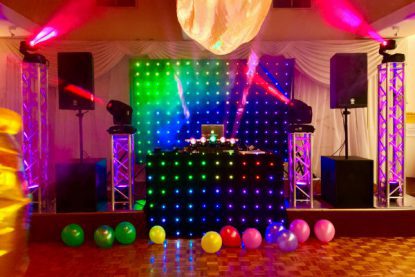 You’ve no doubt had some experience of a mobile DJ at someone’s party, wedding or private event. Bringing their own lighting rigs and sound systems and often taking requests too. These guys need to be versatile with a big music library to pick from. Reading the crowd is super important as they need to entertain a potentially diverse crowd of people.
You’ve no doubt had some experience of a mobile DJ at someone’s party, wedding or private event. Bringing their own lighting rigs and sound systems and often taking requests too. These guys need to be versatile with a big music library to pick from. Reading the crowd is super important as they need to entertain a potentially diverse crowd of people.
Seamless mixing is less important and the audience want to party and chat with each other rather than be wowed by the DJs amazing skills.
Never-the-less its not easy being this type of DJ either. A working knowledge of all of their hardware and software is a must, backups are a must, being able to quick change to different musical genres and know what music will get a party going is an art-form not to be mocked.
Many a club DJ would flounder in these intense environments where someone’s wedding party has to be perfect as it’ll hopefully be the only wedding party they ever have!
DJ / Producers
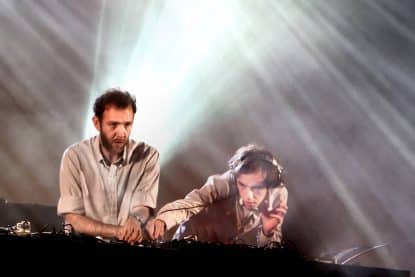 These guys are musicians and DJs with so much more at their disposal. Their DJ sets often include loops and samples they created themselves or with their production team or band. It makes their DJ sets very appealing and unique because they’re generally not DJing with other people’s music.
These guys are musicians and DJs with so much more at their disposal. Their DJ sets often include loops and samples they created themselves or with their production team or band. It makes their DJ sets very appealing and unique because they’re generally not DJing with other people’s music.
Instead they’re creating whole new exclusive versions of their tracks (and sometimes their friend’s tracks) on-the-fly.
Imagine having a music library filled with short loops and samples of your own work. You can pick and choose which samples you want to overlay together to create entirely new sounds as you DJ. Quite a powerful thing to do right?!
This is why Producer DJs often do world tours and play to sell out crowds at big dance festivals.
They’ve created an entirely exclusive and unique DJ selling point. Something that’s hard to match. They still need all the skills to work their DJ equipment and software.
They still need to know how to hype the crowd and keep the party flowing. Its no easier than any other type of DJ-ing, in-fact the intensity of having to remix your own tracks with up to 4 decks can be quite a daunting achievement!
Radio DJs
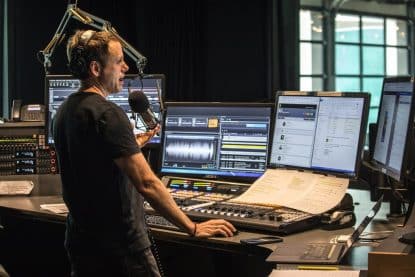 If you’ve ever wondered how radio DJs differ from those in clubs and bars, its usually down to the techniques they use to mix music. It’s all about the presentation and vocal personality on the radio.
If you’ve ever wondered how radio DJs differ from those in clubs and bars, its usually down to the techniques they use to mix music. It’s all about the presentation and vocal personality on the radio.
A friendly voice to introduce the music and engage with the audience, so beat matching and advanced DJ techniques are less important here.
There are plenty of similarities though, one of them being curating playlists! Its so important to play the music people enjoy and will engage with, as radio DJs are usually there to help grow an audience to help raise advertising prices for the radio station.
So knowing the music well, and knowing how to create the perfect set lists for the hours they are performing on the radio is key to being a good radio DJ.
They also need to know their DJ equipment inside out and its usually quite different to what club DJs will be using. Radio DJ mixers often include more deck options for different formats, or are computer driven with multiple channels, sample playback for jingles and adverts, the ability to mix in audio channels from neighbouring studios for news and weather reports.
So radio DJs are very busy while each track is playing, cue-ing up the next track, knowing what to talk about next and keeping the show on a perfectly timed schedule to fit in all the other elements a radio station must provide its audience.
So now we know what DJs do and what they use, let’s look at why you may be wondering what a DJ does and how you can spot a bad DJ.
Bad beat matching
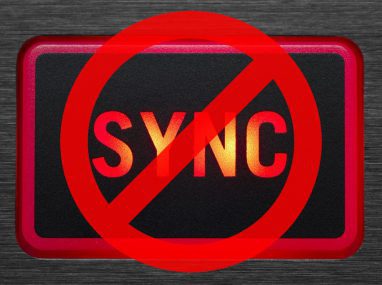 This used to be the most obvious way to spot a bad DJ, especially in night clubs. Because every DJ had to be able to beat match manually. No sync buttons to do it for you back then!
This used to be the most obvious way to spot a bad DJ, especially in night clubs. Because every DJ had to be able to beat match manually. No sync buttons to do it for you back then!
So the measure of a good DJ was partially down to how well they could keep two tracks perfectly beat matched. The sound of two tracks in sync is a beautiful thing to hear. So the sound of beats not in sync can be a horrible jarring experience.
Even with automatic sync controls these days they are far from perfect. Its still possible for DJ software to mis-interpret a track’s BPM and ruin a mix by badly synchronising the tempos. So beat matching is still important, read our article on it here.
You’ll soon know what badly beat matched songs will sound like. The double thudding of kick drums, the mess of synth sounds out of whack, the percussion patterns clashing with one another. Its not a pretty sound. A great DJ will know how to beat match, a bad DJ will stick out a mile when the tempos start wandering away from each other!
Badly chosen songs for the gig
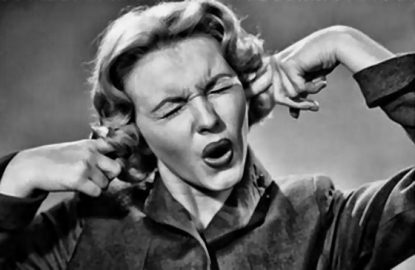 So you think you can DJ? Well a bad DJ will definitely stand out when they pick the wrong song for the wrong moment at the party.
So you think you can DJ? Well a bad DJ will definitely stand out when they pick the wrong song for the wrong moment at the party.
A bad wedding DJ can often do this, thinking it’ll be great to just drop in some heavy metal when everyone was enjoying some pop track. Or killing the mood with a slow track when everyone was busy dancing and partying. Reading the crowd and their energy is vitally important as a DJ.
Not only that but leaving a badly chosen track playing when the dance floor clears is the sign of a bad DJ. We’ve all been there, especially in the early days of our DJ careers.
Thinking the crowd will respond well to a track but for some reason it just kills the mood. A good DJ will realise whats happened, find another track and waste no time in ditching the offending song and switching to the (hopefully) more popular track. Even if the offending song was only 30 seconds in, its better to get the energy back in the room as quickly as possible.
Being unprofessional
 This one is all too common unfortunately. DJs getting drunk, being late, letting their ego runaway with them or simply just letting their client own by being unprofessional. I’ve seen it all and no doubt you might have at some point.
This one is all too common unfortunately. DJs getting drunk, being late, letting their ego runaway with them or simply just letting their client own by being unprofessional. I’ve seen it all and no doubt you might have at some point.
DJ-ing is a job so a good DJ will always show up on time, sober and ready to work. They’re entertainers and masters of the party so making sure everyone is entertained and the client got exactly what they paid for is important.
There’s so many other mistakes DJs make so we wrote a really in-depth article, see how many you may have spotted DJs doing.
Even world famous DJs can let their fans down sometimes. Inflated egos and ridiculously sized entourages can cause all sorts of problems. The best DJs keep it professional.
So what is it that separates the best DJs in the world from the fake DJs?
What is a fake DJ anyway?
Well by fake DJ I mean people who want to be a DJ, for the ego rub, or the reputation as a party starter. They have no idea how to actually DJ, but they like how a DJ looks when they’re the centre of attention.
This mostly happens at private parties and has been perpetuated by the popularity of DJ apps available for smart phones and iPads. Back in the day we used to joke “Everyone wants to be a DJ” but they didn’t have the expensive equipment or the vast shelf-bending vinyl collection. Now all they need to ruin a party is an app on their chosen mobile device and a digital music library.
From there its just a short step to buying DJ gear and thinking they are God’s gift to music.
You’ll be all too familiar with the fake DJs of this world. There’s often one at a house party, sometimes weddings. People who lack the skills and over-compensate with confidence.
A bad mix or shoddy DJ set cannot be saved with confidence.
 On the subject of wannabe DJs there’s been a growing trend in recent years for celebrities to garner huge sums of money for DJ appearances at famous night clubs and festivals. The likes of Paris Hilton, Gok Wan and Elijah Wood have all infiltrated the dance music scene.
On the subject of wannabe DJs there’s been a growing trend in recent years for celebrities to garner huge sums of money for DJ appearances at famous night clubs and festivals. The likes of Paris Hilton, Gok Wan and Elijah Wood have all infiltrated the dance music scene.
Now I’m not knocking all celebrity DJs as some have actually taken the time to learn the skills and refine their craft. But on the whole celebrity DJs are just there to draw a crowd and promote a club brand on social media. They’re not there because they can 4-deck mix seamlessly with the best in the business.
So for this you might be wondering what do celebrity DJs actually do?
Over the years they’ve actually be caught doing all sorts of things like playing back to back sessions with actual DJs who do all of the work while they pretend to push buttons. Or play a pre-recorded mix (sometimes complete with embarrassing jingles and hooks for other people’s shows) while they fiddle with controls that aren’t even plugged in.
As I mentioned some celebrities take it seriously. Idris Elba is one such movie star who knows exactly how to DJ and in this modern world of hitting sync, its nice to see he can actually manually beat-match like a pro.
So we’ve walked our way through all manner of subjects on what DJs do and we’re building up a picture of what makes a great DJ. So lets summarise what a great DJ should do.
- A DJ should be able to mix – transitioning from one song to another relatively seamlessly or in some other creative way
- A DJ should be able to read the crowd – Knowing what songs work and when to move on to the next
- A DJ should park their ego at the door – Professional DJs get booked, unprofessional DJs just back a bad name for themselves
- A DJ knows how to beat-match – Its an art-form even today’s modern DJs need to have when al that tech lets them down
- A DJ can bring energy to the party – Not just by the name or their brand, but by the recipe of all their DJ-ing skills
- A DJ should interact with the crowd – It doesn’t have to be all hand waving and fist pumping. They should just show they’re having a great time too
- A DJ should be able to save your life with a song – That song by InDeep wasn’t wrong! One song can lift your spirits, transform your day and make beautiful fond memories. That’s a powerful thing!
Do you want to be a DJ?
Maybe you searched for this topic because you want to be a DJ. Have I put you off? Or have I shown you just how awesome being a truly great DJ can be?
I’m hoping you can see its a very technical business with plenty of skills to master, but its ultimately very rewarding and if you have a love for music its the best place to be at a party.
We have lots more great articles and tutorials worth reading if you want to get started!
